Block It Out
7 years ago by
So this story is about sunscreen. Not exactly the sexiest of topic, I know. But to be fair, neither is a décolletage that looks like vintage cowhide. So I’m going to do my best to sex this up for you so that not only will you have better, smoother skin for longer (because you know, it’s the number one skin ager and all), you may even retain some of this info and become a sunscreen bandit too.
Being Aussie, I’m obsessed with sunscreen. Like, I currently have three on rotation, plus a couple options for my face. That’s because we’ve got a fat ass ozone layer hole hanging right over us, so there’s no filter before the UV hits our skin. Ouch. This fact also wins us the illustrious title of “country with the highest rate of skin cancer.” See? Olympic swimming is not the only thing us Aussies are good at.
Now, here’s what you need to know. There are two types of sunscreens and they both operate very differently.
Chemical sunscreen:
These work by using some magic sorcery (“science”) to convert the harmful UVA and UVB rays into non-harmful heat and send them back out into the ether. Or, as Park Avenue plastic surgeon Dr. Melissa Doft simply explains, “chemical sunscreens absorb the rays so that they’re not transmitted to your skin.” These tend to be better for sport or active days because they’re more sweat and water-resistant.
Physical sunscreen:
These use minerals like titanium dioxide and zinc oxide to physically block and reflect the sun from your skin. These are great for people with sensitive skin or allergies because zinc, in particular, has a low allergen rate.
The SP Factor:
Now grab some wine because we’re going to talk about sun protection factor (also known as SPF), which is weird and confusing and not linear – which as a non-numbers person breaks my tiny brain. And rosé definitely helps.
A sunscreen with an SPF 30 filters around 97 percent of UVB rays, whereas an SPF 50 blocks around 98 percent – and the increase is even more minimal after 50+. See, what the SPF actually tells you is how long you’re protected for.
Dr. Doft explains, “it measures how much solar energy is required to burn skin that’s protected by sunscreen, so if at midday it would take you 10 minutes without sunscreen to get red, wearing SPF 30 would prevent this for 300 minutes.” And this is why reapplying every two to three hours is necessary, even if it clashes with Spritz O’Clock.
Only buy broad spectrum:
Really simply put, UVA rays are the aging, dermis-destroying ones, and UVB’s are the ones responsible for surface damage – like sunburn. Broad spectrum sunscreen protects against both, and you should always be buying a SPF 30 or higher.
Apply it right:
Chemical sunscreens need to bond to your skin, so apply to a fresh face directly after you cleanse. Also, they need 20 minutes for the bonding to happen so you can’t just slap it on and run out the door. Physical blockers go on at the end of your skin routine. And finally, make sure you’re using enough – around a nickel size for your face and two tablespoons for your body.
Yes, you do need it daily:
Even in winter. Even on overcast days. Those rays are mighty and can penetrate glass, plus up to 80 percent of UV rays can pass through clouds.
Stay away from Oxybenzone:
This ingredient is common in sunscreen however, as Dr. Doft explains “it’s been shown to cause allergic reactions and to act as a weak estrogen with anti-androgenic effects.” It can also cause skin reactions, despite being approved by the FDA. Interestingly, Hawaii also recently banned sunscreens with oxybenzone, but for a whole different reason: because it was contributing to the destruction of the island’s coral reefs and ocean creatures… which pretty much speaks for itself.
What about toxicity?
Yes, chemical sunscreens do contain chemical active ingredients. And some of those will be absorbed into your body through the skin. The FDA has not looked into the potential hazards of these filters and there is little information or conclusive evidence about most of these active ingredients to determine whether they are in fact toxic – the exception of course being oxybenzone, which really should be avoided.
If you’re concerned about toxicity, opt for a zinc based physical block (but avoid ones with nano particles until we know more on them), and check out the Environmental Working Group’s table on active ingredient toxicity to see how your sunscreen fares.
Look out for infared protection:
Traditional sunscreens don’t protect from these rays, which travel deep into the layers of the skin causing free radical damage. However, it is becoming more common so look out for products that do both.
But, what about vitamin D?
It’s true that we all need vitamin D: it’s good for bones, health and general happiness. And yes, vitamin D deficiency is not good news, and we should all be aware of it.
But, how much we need depends on a whole host of things including age, ethnicity, body weight, health, where we live, time of year (and more). Some experts will recommend 15 minutes of exposed sunlight multiple times a week (in the morning, when the sun is less harsh, and for very limited time), but again many things can affect how much of vitamin D you get from that sunlight, including whether you live in the city, your skin color and the pollution levels.
If you’re concerned about your vitamin D levels, you can have these checked by a healthcare professional, and take supplements to support these levels, as well as eating foods rich in vitamin D and antioxidants.
Ingestible sunscreen is a thing:
Though the jury is still out on whether these are effective (especially as the protection factor is so low), there are now pills and drinks that claim to have sunscreen protection benefits. These use high level antioxidants to fight free radicals which help protect again cellular damage, but experts advise that these shouldn’t replace, but be in addition to traditional sunscreen.
Inspired? Here’s a few sunscreens we’re currently loving.

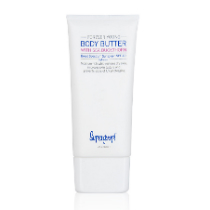
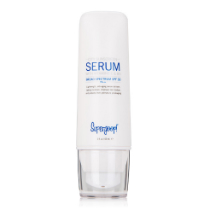


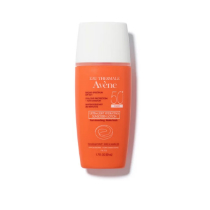
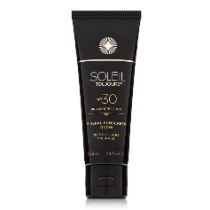
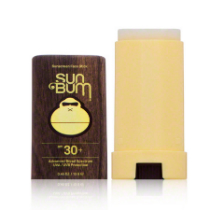
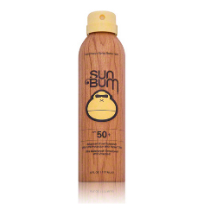
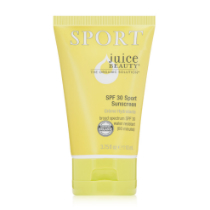
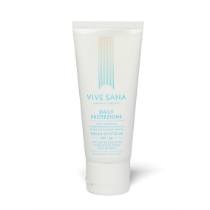




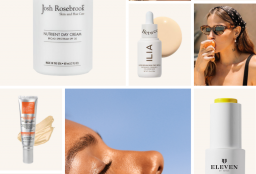


















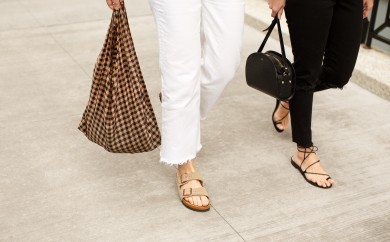
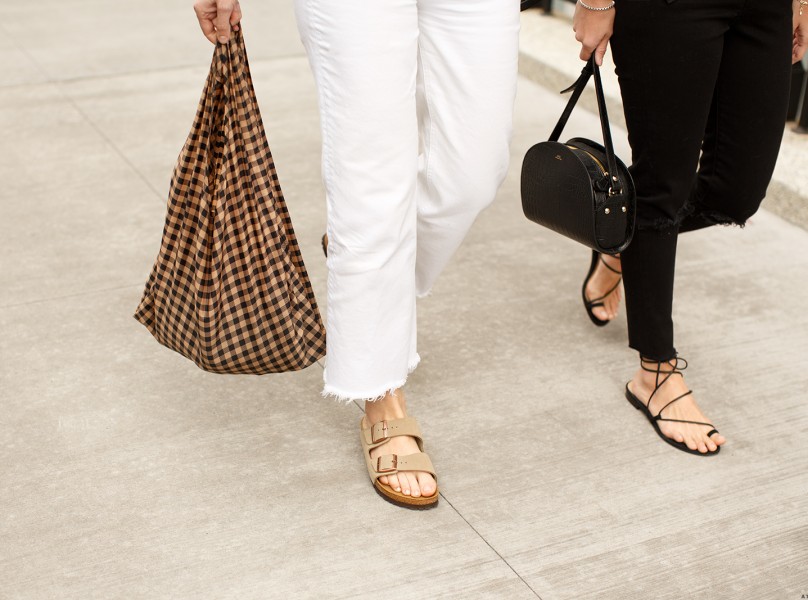
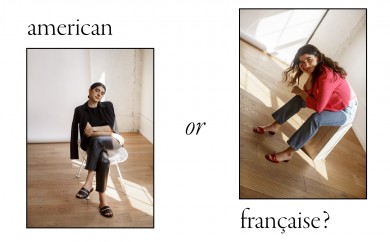
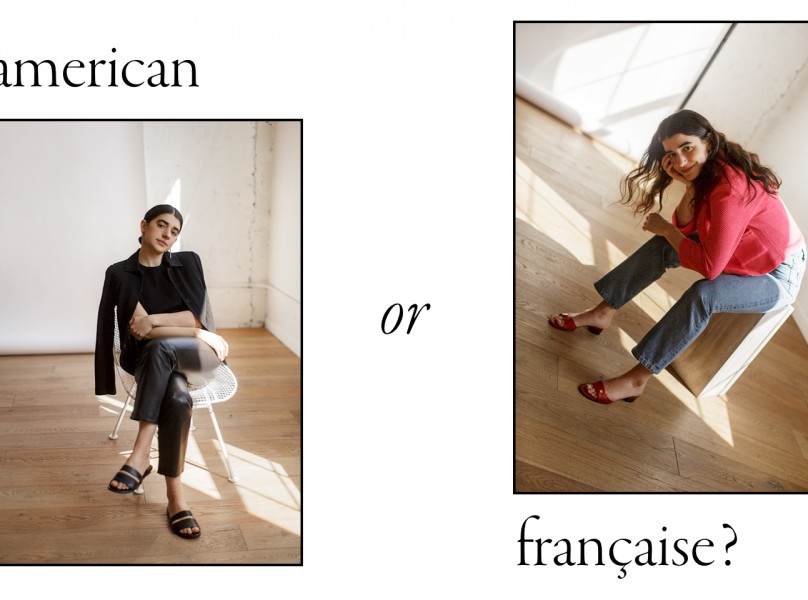






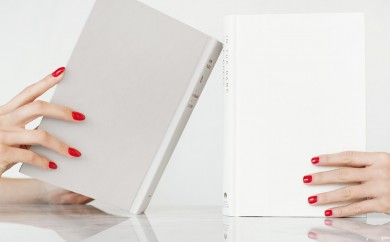
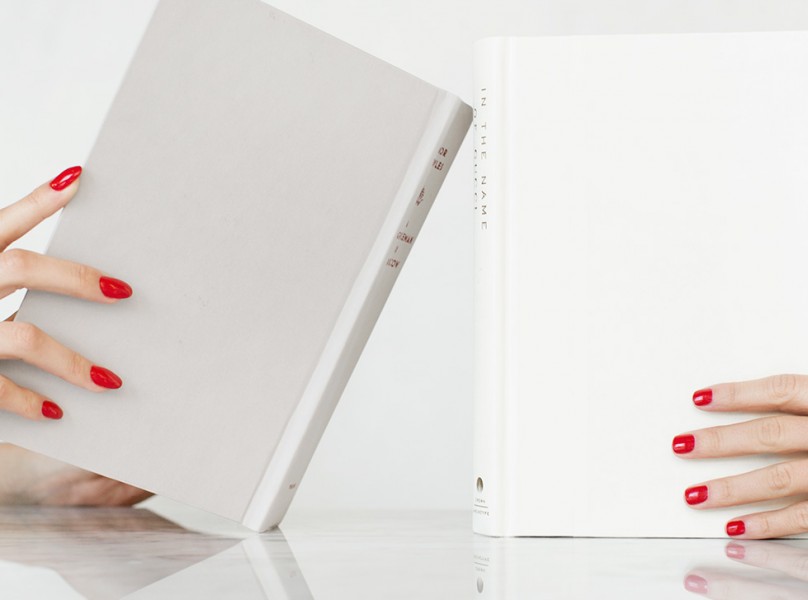


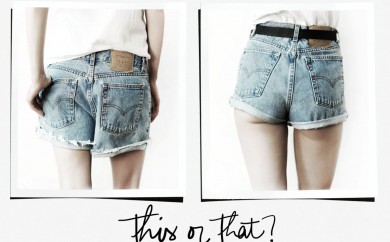
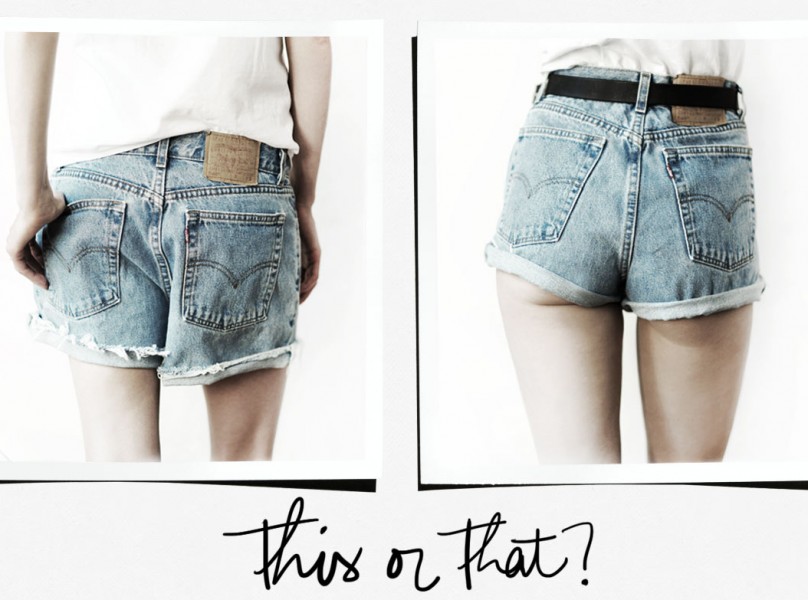
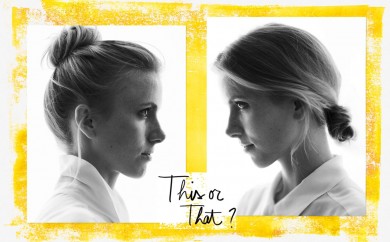
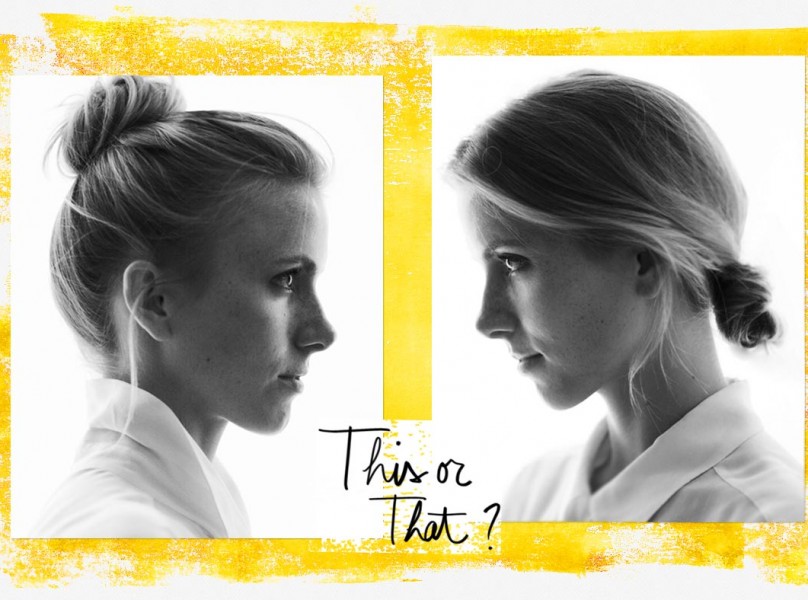








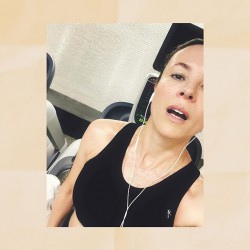


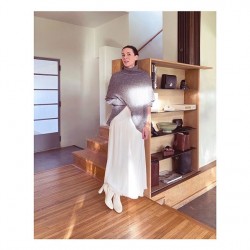
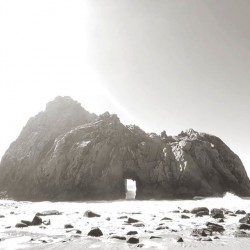



Great Article. Any suggestions for a great sport sunscreen? I play tennis and nothing stays on my face after I start to sweat.
Hi Jennifer,
The Juice Beauty sport sunscreen in the shopping section here is great! I plan on using it myself for an upcoming Spartan race!
Tori x
This is a great topic but I feel that this article misses an opportunity to go deeper, interview more experts, and provide a good roundup of the options out there. If you really research oxybenzone, not just a cursory glance at EWG, it is clear that the evidence against using it is extremely weak. The article only cites one dermatologist’s opinion and is misleading about the possible risks associated with oxybenzone.
The only studies that tested it gave high amounts of the substance to rats. In contrast to humans who would use it topically, the rats ingested it, and it was more than what a human would use in an entire lifetime.
Oxybenzone is an excellent sunscreen ingredient, leaves no white cast, and works really well in waterproof formulations (see Neutrogena sunscreens). If you plan to be swimming in an area with coral, and you’re concerned, then don’t use oxybenzone sunscreen. OR just don’t go there because the tourist traffic is probably impacting the coral in any case!
Physical sunscreens are great in theory, but have major downsides. Reapplying them is a nightmare because it builds up on your face, clogs pores, and leaves a white cast. The more you reapply, the thicker and whiter it gets! I find physical sunscreens to be drying and they also make me break out.
I completely agree with you on all points, Eloise!
“Ingestible sunscreen” is not really a thing at all… It’s just vitamins and it won’t prevent you from getting a sunburn or a even a tan.
Regarding the other commenter’s post on sport sunscreen, I’ve been using All Good Sport Sunscreen and it’s not bad as far as how it feels when exercising outdoors, but I haven’t tried it at midday when the sun is strongest. As the article states, http://www.ewg.org is a great place to look for effective and healthy sunscreens.
The picture is beautiful, indeed… your new photograph (s) is/are great, giving a new style of pics! Well appreciated!
I like the theme of this article, but I must point out that while you talk about oxybenzone as a not desirable ingredient, the La Mer sunscreen you recommend at the bottom contains that ingredient.
apologies that one slipped by us — we have removed! x
Some vitamin D from the sun is good. I understand the risk for those living in countries with sun but I live in Scotland…virtually none here so I don’ t blame people wanting to sunbathe when the sun does actually appear.
Shout out to Aussie brand “NATIO Daily Defence Face Moisturiser SPF 50+” which is honestly the best sunscreen I’ve ever used for daily use, particularly under makeup. Looks, feels and smells nice; doesn’t clog pores or cause breakouts plus it’s only $AU18 for 100ml making it affordable for everyone….
I am a bit fatigued by our society trying to blame it on the sun. If it makes plants grow and ripens fruits to feed us surely it must be good for us too. Of course there are times of the day in different geographic areas when sun exposure is not good but we’ve become a society obsessed with sunscreen at all costs without looking at the research (or maybe big pharma is not interested to make it available).
In a book by Nadine Artemis based on a lot of research it is actually claimed that the high skin cancer rate is due to the inability of the skin to naturally protect itself caused by the harm of incessant nasty sunscreen use. As we soak up the sun the chemicals bake into our bodies. She as well mentions that oxybenzone is a powerful free-radical generator that is noncarcinogenic – until exposed to sunlight! And who knows how many other ingredients react the same. It’s a complex topic and I would urge everyone to get informed from as many sources as possible.
Great comment, thanks!
I just started using vanicream sunscreen (50+) which is zinc/titanium oxide and I don’t even break out a bit (which is amazing!). When you first put it on you feel like captain powder but it absorbs quickly and leaves a nice matte, non greasy finish which is not white at all.
As an Australian woman who has very fair skin and REALLY hates the chemical smells of sunscreen, try SKINSTITUTE 30+. Believe me, you’ll NEVER look back. My dermatologist is always impressed by the lack of sun damage when I have my yearly skin checks. It’s an Australian skincare brand that is very reasonably priced and is created and tested for Australian sun conditions. If you’ve ever seen the state of older Australian skin (I do at the dermatologist!) you’d be afraid too! I’m so happy I was a teenage nerd!
I just ordered a sun parasol from http://www.brelli.com to help protect my skin. They’re cute and definitely worth checking out.
Who is the hat by?
fron